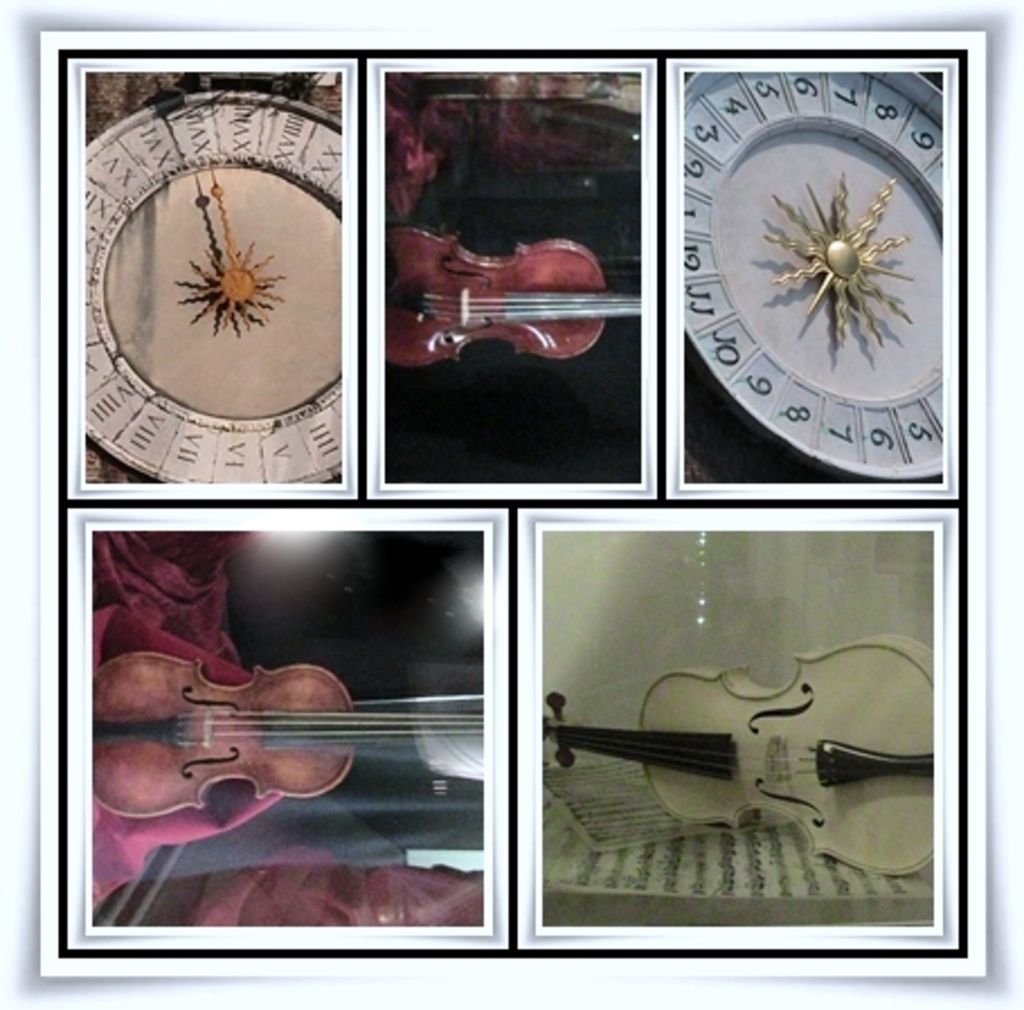Extending the Life of Your Mechanical Timepiece: A Guide
Revamped Post:
- Introduction
There ain't many mechanical clocks that'd run for 25 or 30 years without a hiccup, just with the occasional oiling. Recently, I got a letter about someone's clock that was taken to a repair shop, who quoted him a high price and promised a 30-year guarantee. Sounds fishy, huh? I'll walk you through what servicing a mechanical clock entails, and the factors that'll affect its durability. Knowing these points will help you decide the ideal service cycle for your antique timepiece.
Key Issues I Look Out For
Usually, the clocks in my collection get checked every three to four years. I'd pull out the movement, assess its condition, give it an oil bath if it's dry, and reassemble it. If I find a clock that stops randomly, I'd service it as a preemptive step. Clocks that stop occasionally are sending a clear "get your ass over here" vibe, mate.
While the movement's out, I'd give it a thorough once-over, paying close attention to the oil around the pivot holes. If there's no oil, I'd squirt some on. But if I see sludge and grime buildup, it's a warning sign. Dirt and contaminants have formed an abrasive paste, causing friction and wear on the components. If it's caught early, disassembling might not be required, but if it's bad, re-bushing might be necessary.
Left unchecked, friction can cause oval-shaped holes and eventually bring the clock to a halt.
A Clock's Digs
I've already covered this subject in my previous article here.
Common Reasons Why Clocks Stop-and How to Diagnose
Spring-driven time and strike clocks generally experience more wear on the strike side pivots due to the stop-and-start action of the hourly striking.
Occasionally, I encounter a movement that's unbalanced, with one side significantly more worn than the other. I worked on a movement once that required six bushings on the time side but none on the strike side. Guess that past owner wasn't fond of the striking sound, leaving the strike side unwound. The sound of a striking clock can be a bit much for some, especially at pesky hours of the morning during restless nights. With time, even the annoyance of a clock chiming or striking gradually fades.
Here's a quick distinction between striking and chiming clocks: striking clocks simply strike, always on the hour and sometimes on the half hour; chiming clocks, however, play a musical sequence on each quarter hour and strike the time on the hour. People often mislabel a clock as chiming when, in reality, it only strikes.
With chiming clocks, the chime train is first to suffer the effects of dried oil and dirt. The extra intricacy of the chime side means more parts are prone to wear, eventually making the chime slow and eventually stop.
If I don't get full power during a clock's designated running cycle, I'd investigate. For example, if a clock consistently quits on day four or five of its eight-day cycle, it means the movement's dirty or has worn parts causing it to shut down prematurely. Beyond that, a weak mainspring is another culprit. I don't usually replace mainsprings, but it's a common practice among professionals.
If your weight-driven clock quits before its designed cycle, check for twisted cables around the winding drum. Another issue is sympathetic vibration when the clock stops as the weights descend. A harmonious phenomenon occurs where the power that drives the pendulum is also used to swing the weights; the pendulum doesn't receive its full share of energy and eventually stops.
Otherwise, a weight-driven clock doesn't deal well with pivot wear and might need disassembly to investigate for issues.
Is the clock ticking evenly? An out-of-sync clock could struggle to run or not at all. Make sure you can hear a rhythmic tick-tock when winding your clock, and level the case as needed.
Some clocks have varying levels of wear tolerance. It doesn't take much wear for a German movement to stop, while American time-and-strike clocks can tolerate more wear and still run decently, even when worn.
A kinked suspension spring, or one that's too stiff or the wrong size, can affect the oscillation of the pendulum.
A clock that won't run once the mainsprings are fully wound is often thought to be 'overwound.' The term 'overwound' is bunk, though an old, gunked-up spring might appear tight. In this case, the clock must be taken apart, and while the mainsprings are thoroughly cleaned, the entire movement must be checked.
Quite often, I meet clocks whose movements have been ripped out so many times that the mounting screws have become loose. This issue can be resolved by using slightly larger screws or by filling the screw holes before reusing the original screws. If left unaddressed, however, the movement might become unstable. A movement that isn't securely mounted could shift, become misaligned, and throw the movement out of sync.
Sometimes, an unusual problem can occur when the clock stops at the exact hour every twelve hours. Check that the minute and hour hands aren't impeding each other.
Servicing a Movement – What's That All About?
How often should a mechanical clock be serviced? It ain't as straightforward as it seems.
If your clock ain't ticking, cleaning it is the first step to figuring out what's wrong. Cleaning, just another word for servicing, implies a complete tear-down of the movement.
Though it was a common practice in the past, dunking a movement in solvent and hoping for the best is not a substitute for proper servicing, nor is spraying the clock with lubricant. WD-40 is a favorite among amateurs, but it isn't a proper lubricant - it's a water-dispersing agent.
Servicing a clock includes the following 13 steps:
- Removing the movement from its case,
- Letting down the mainsprings (if present),
- Assessing the movement,
- Disassembling the movement, taking photos, or making notes,
- Inspecting the parts carefully,
- Cleaning the movement either with an ultrasonic cleaner or by hand,
- Addressing any wear issues and repairing damage caused by abuse or failed parts.
- Reassembling,
- Oilin\, selecting components,
- Running the movement on a test stand,
- Adjusting if necessary,
- Reinstalling into the case, and,
- Adjusting again if needed
There's no substitute for a completely disassembled movement.
Taking care of a mechanical clock means more than just winding it and hoping it keeps time. Regular inspection, proper servicing, and attention to wear signs can help keep your clock running like a dream for years to come. Understanding what your clock needs and when will help you preserve both its functionality and its value.
Savor More from Antique and Vintage Clocks
Subscribe to get the latest posts directly in your mailbox.
Rate This:
Share This:
- Click to share on Facebook (Opens in new window)Facebook
- Click to share on LinkedIn (Opens in new window)LinkedIn
- Click to share on Tumblr (Opens in new window)Tumblr
- Click to share on Pinterest (Opens in new window)Pinterest
- Click to share on Reddit (Opens in new window)Reddit
- Click to share on WhatsApp (Opens in new window)WhatsApp
- Click to share on X (Opens in new window)X
Related
Why Repair an Antique Clock When the Repair Exceeds its Value?
A common query is, "why repair an antique clock if the repair exceeds its value" The answer depends on personal attachment to the clock and its historical significance. Let's talk about sentimentality If the clock holds sentimental value, repairing it could be worthwhile, regardless of its monetary value. But, if it has little meaning and the cost of repair outweighs its worth, restoring it may not be advisable. Making a rational decision can be tough in situations where emotions play a role, but a well-informed choice can help avoid financial losses.
In "antique"
Finding a Reliable Clock Repair Professional
When you acquire a clock, whether as a gift, inheritance, or from shopping, and it's not functioning right, consider getting it repaired. Do yourself a favor and don't try fixing it yourself, especially if you're a novice. Here are some things to look for when finding a reliable clock repair professional:
- Recommendations: Ask friends, family, or visit online forums for recommendations. Word-of-mouth is a powerful tool in choosing a repairman with a track record of quality work.
- Experience: Look for someone who has extensive experience working with the specific type of clock you have.
- Certifications and Training: Check if the repairman has relevant certifications and has undergone proper training in clock repair.
- Transparency: A good clock repair professional should be open about the service process, cost, and expected turnaround time.
- Charges: Compare prices with other repair professionals in the area. Make sure the charges are reasonable and fair.
In "antique"
Can I Repair My Antique Clock with Common Household Tools?
While it is possible to repair an antique clock with common tools, it can be risky, and the quality of the repair might not meet professional standards. That's the short answer.
Home repairs may seem tempting due to the potential cost savings, but antique clocks are intricate devices that require specialized knowledge and tools. Attempting a repair without proper training and equipment could lead to further damage and additional repair costs. It's usually best to entrust your cherished antique clock to a professional.
In "antique"
- Embracing the charm of vintage clocks not only enhances your home's decor but also adds a touch of timeless elegance to your lifestyle.
- From clock repair to fashion-and-beauty, travel, food-and-drink, shopping, pets, relationships, home-and-garden, and cars, vintage clocks can serve as a unique conversation starter in various lifestyle settings.
- A beautifully-mended antique clock doesn't only tell time but also showcases fine craftsmanship from eras past, adding a unique accent to your interior decor.
- During those long summer vacations, you might find yourself digging through flea markets in search of affordable vintage clocks for distribution to friends, uncovering hidden gems for their homes and gardens.
- On a warm spring day, while sitting in the sun-drenched backyard, tending to your garden, the gentle ticking of the vintage clock on the patio provides a comforting melody that complements the tranquility of the surroundings.




